
Clip-on tuners are very convenient electronic devices because they help keep musical instruments in tune. Some people have questioned the accuracy of these devices because depending on the type of sensor it comes with, it could be less sensitive in detecting low rage pitch notes.
If you want the quick answer on how clip-on tuners work here, it is: They sense the vibrations from the instrument to detect the pitch. Then it compares the pitch of the string that is being tuned to the internal notes stored in memory and lets you know if you are in tune or if you need to adjust.
In this post, I explain how do clip-on tuners work, how accurate they are, and present the different types of tuners available.
How Do Clip-On Tuners Work
To understand how a clip-on tuner works, we first need to understand what pitch is. In music, pitch defines how hi or low a note is, and it’s measured in Hertz (Hz). For example, the standard frequency of the note “A” is 440 Hz. It means that “A” has 440 vibrations per second.
A clip-on tuner does not hear the note; all it does is sense the vibrations coming from the string to detect the pitch.
Affordable clip-on tuners use a piezoelectric transducer to detect vibrations and convert them into an electrical signal. The electrical signal is then amplified so that the microprocessor can use it.
Depending on the type of tuner and brand, it uses different methods to determine the pitch. Such a method is the Fast Fourier Transform (FFT), which converts pitch to frequency.
I am not going to explain in detail what an FFT is because it is way beyond the scope of this article. Still, all you need to know is that FFT is a complicated mathematical method used for transforming a function of time into a function of frequency. The FFT algorithm is widely used in many applications for science, music, and engineering, etc.
After the microprocessor has detected the frequency, it compares the generated frequency with a stored value that serves as a reference value.
If the frequency is low or high when compared to the reference value, the microprocessor sends a signal usually to a LED or LCD screen that lets you know if you need to tighten or loosen the string until the frequency generated from the vibrations matches the reference value.
For example, let’s say you are trying to tune the second string “B” in your guitar. The frequency of this note is 246.94 Hz. If the tuner detects 300 vibrations, it will show on the screen that your “B” note is high. As you loosen the string, the tension will be less, thus vibrate slower, and as you hit 246.9 +/- 1%, the tuner will show that the note Is tuned.
Are Clip-on Tuners Accurate?
For the most part, clip-on tuners are accurate. Some models are more reliable than others, but in general, they are.
Accuracy in instrument tuners is also called tolerance and is measured in “cent.” As defined by Wikipedia, a musical cent is a logarithmic unit of measure used for musical intervals. In one musical scale, there are 12 semitones or five tones and two semitones. Each tone has 200 cents, and a semitone has 100 cents.
When shopping for clip-on digital tuners, you will see that the tolerances range from +/- 0.3 cents to +/- 5 cents. The most common is +/-1 cent. What this means is that the error tolerance of a clip-on tuner is 1/100 per semitone.
The accuracy of these tuners is adequate between 27.5 Hz (A0) and 4186 Hz (C8) for chromatic tuners. There could be some small differences between different brands and models. Check the specs for the one you want to buy.
Types of Digital Tuners
There are several types of digital tuners, and each provides different characteristics. All work in almost the same way but with clear differences. Let’s explore each model.
Handheld Tuners
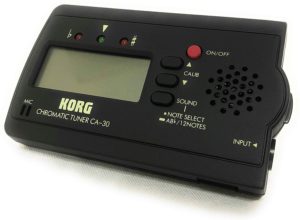
These are the oldest type, and they were first introduced back in the 1930s. The commercial units were more affordable and available in the ’60s and ’70s. Nowadays, they are still used, and the most common of this type is the KORG CA30.
Modern handheld Tuners use a small microphone to detect the sound. They also provide a direct input to connect any pluggable instruments such as guitars, bass, or any miked instrument.
This type of tuner is not as practical as other types, but are still used by many musicians around the world.
Clip-on Tuners.
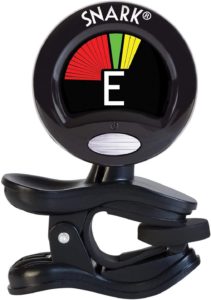
Clip-on Tuners are small and very convenient because they are accurate, can be easily attached to your instrument, and be ready for use without connecting the instrument to it. It can tune the instrument even in a noisy environment.
Most of the clip-on tuners available in the market use a piezoelectric transducer sensor, which is accurate for frequencies as low as 27.5 Hz.
The small LCD screen and LEDs easily let the user know if the tuning is off and visually helps to get the instrument tuned in a short time.
Pedal Tuners
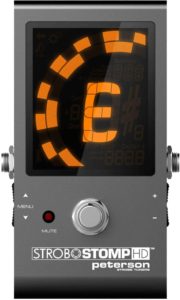
Guitar pedals are mainly used for effects, but some digital multi-effects have tuners. If you don’t use digital multi-effects, there are standalone pedals that are tuners. Examples of pedal tuners are the Boss TU3, TC Electronic Polytune 3 Mini, and the Korg Pitchblack.
Pedal tuners are excellent because they can be online with other pedals. Whenever you need to check your tuning, all you do is activate it by pressing the footswitch. It will disconnect your guitar from the pedal chain so that you can tune in silence.
They are very accurate, and most of the time, they are chromatic, meaning that you can use them with any instrument that can be plugged.
Polyphonic Pedal Tuners
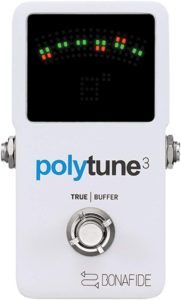
TC Electronics first introduced polyphonic tuners in 2010. This type of tuner revolutionized the industry because they have the capability of tuning all six strings of a guitar simultaneously.
The advantage over the other types of tuners is that you can quickly check the tuning of all strings at the same time. This feature helps professional guitarist save time while in live performance or in the recording studio.
Polyphonic tuners have advanced algorithms that can detect the right pitch of each string as if you were doing one by one. They are very accurate, offering an accuracy of 0.5 cent, which is very good.
App Tuners
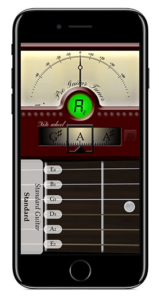
With high-performance processors in modern-day smartphones and easy access to an extensive app library, you can have at your fingertips a digital tuner for any instrument.
App-based tuners use the phone’s microphone to sense the note and use software-based conversion methods to detect the pitch.
Although app tuners can help you check the tuning of instruments, depending on how the app is coded, and the resolution of the analog to digital converter in the phone, they could be less accurate than hardware tuners.
Hardware-based units are designed for a specific task and are very good at that particular task.
On the other hand, newer smartphones have lots of processing power. They include high-resolution A/D converters that are beyond what is needed for an instrument tuner. In such a case, the app tuner could be as good as a hardware tuner.
Just check the specs of the app tuner to find out the accuracy. If it is 5 cents or less, it is probably good.
Final Thoughts
Clip-on tuners are great for keeping your instrument in tune. They are affordable, offer excellent accuracy, and are very convenient.
In this post, I have answered the question of how do clip tuners work and also talked about their accuracy and the different types of tuners.
If you have any questions, please write it in the comments or send it by email. Thank you for reading my blog.